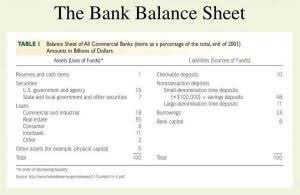
All information prepared on this site is for informational purposes only, and should not be relied on for legal, tax or accounting advice. You should consult your own legal, tax or accounting advisors before engaging in any transaction. The content on this website is provided “as is;” no representations are made that the content is owners equity meaning error-free. For small businesses, an accurate calculation of equity is essential for making informed financial decisions, securing funding, and planning for the future. Real-world examples demonstrate how equity influences business decisions, from start-ups seeking investment to established firms planning expansions or mergers.
- Similar to partnerships, corporations are often formed with multiple equity owners.
- Retained earnings can grow to become a large part of owner’s equity over time.
- It’s essentially a summary or breakdown of the changes in your capital account, which represents the section of the balance sheet that details the owner’s equity in the business.
- A company with brand equity is not incurring high expenses to produce its product and bring it to market, but they are seeing a difference in the price, which contributes to higher margins and bigger profits.
- Corporations are formed when a business has multiple equity ownership, but unlike partnerships, corporation owners are provided legal liability protection.
- You’ll need to know what your assets and liabilities are before you calculate it, and you’ll find your owner’s equity on the right side of your balance sheet.
Shareholder equity alone is not a definitive indicator of a company’s financial health; used in conjunction with other tools and metrics, the investor can accurately analyze the health of an organization. In financial terms, owner’s equity represents an owner’s claim on the assets of their business, after all liabilities have been accounted for. In simpler terms, it’s the amount that remains for the business owner once all the business’s debts have been paid off. However, if you’ve structured your business as a corporation, accounts like retained earnings, treasury stock, and additional paid-in capital could also be included in your balance sheet. Owners’ equity is the capital theoretically available for distribution to the owner of a sole proprietorship.
Additional forms of equity
However, corporations differ from partnerships in that they provide legal liability protection to the owners to facilitate transferability of ownership interests. With two machines, he generates twice the amount of operating profit, doubling his operating earnings, minus interest on the loan, allowing him to grow his equity account. In terms of the balance sheet values, we’ll start with retained earnings.

Obviously, the goal of private equity is to pursue a high return on investment (ROI). However, when you look at your financial statements, there isn’t a line item that indicates what you contributed to both start and keep your business running. Today, let’s dive into this owner’s equity guide and learn how it translates your investment into the financials of your business. The equity section of the balance sheet provides insights into various components like retained earnings, shareholder capital, and any reserves. The balance sheet, a fundamental financial statement, is where equity’s importance shines. It lists a company’s total assets, liabilities, and equity at a specific point in time.
Business Ownership and Capital Accounts
There are several different components that contribute to the owner’s equity formula. Owner’s capital is the permanent account that maintains the cumulative balance of draws, contributions, income, and losses over time. This balance could be positive or negative depending on the next few components. According to the accounting equation, owner’s equity equals total company assets minus total company liabilities. While owner’s equity is an asset to the owner, to the business it represents a potential claim, so is listed on the same side as liabilities. It represents the owner’s claims to what would be leftover if the business sold all of its assets and paid off its debts.
Retained earnings are usually the largest component of stockholders’ equity for companies operating for many years. In addition, shareholder equity can represent the book value of a company. One of the most important (and underrated) lines in your financial statements is owner’s equity. This is a private form of ownership—the sole proprietor, or owner, has possession of all the company’s equity.
Unraveling the Calculation of Owner’s Equity
This means the owner’s equity represents the owner’s net worth of a business. It is the total value of a company’s net assets after all liabilities have been deducted. It’s the funds shareholders pumped in when they first bought their shares. These investors usually get a say in company decisions (thanks to voting rights) and might even enjoy dividends, though that’s not always a given.
